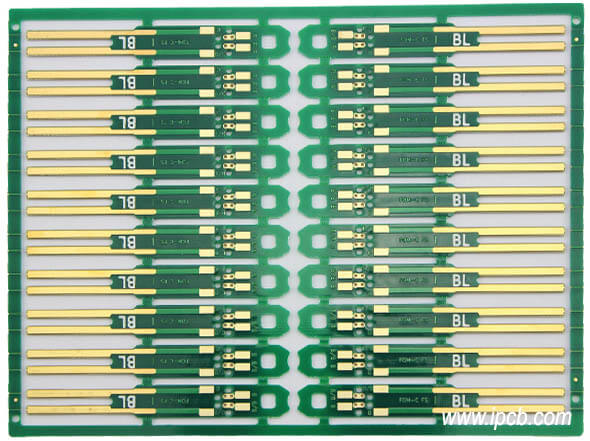Antenna is an important part of all kinds of smart devices, all devices that need to use wireless need to use it.Now is the wireless era, the network router is wireless WiFi,computers,mobile phones,connecting to the Internet no longer need to connect the cable, Bluetooth headset, Bluetooth mouse, Bluetooth keyboard and so on.The performance of this antenna is very important.
Generally speaking,there are some factors for choosing an antenna.In addition to considering the performance,but also consider the cost,in the choice of antenna,need to be considered comprehensively.Today ipcb give you a variety of antenna PCB design and design points.

Antenna Printed Circuit Board
PCB antennas are generally of the following types:
First PCB Antenna
This type of antenna is low-cost, but has a slightly lower performance.PCB antennas also come in several forms.
One type.Planar inverted F antenna, abbreviated as PIFA.
This inverted F antenna PCB design need to pay attention to what problems?
First of all, we need to understand the knowledge of RF PCB.For RF PCB, any copper foil, wire can not be considered a simple wire.It is an equivalent circuit composed of many resistor-capacitor circuits.If you see a short circuit, it is not an RF PCB short circuit.In this way, let's take a look at the PCB design of the inverted F antenna.
This PCB antenna has six points to note:
1.This inverted F antenna is not randomly drawn.This antenna has a special library.Pick it up and put it on as needed.If there is not enough space, then they have made their own special antenna by simulation.
2.The line impedance of the RF feed point must be 50 ohms.
3.The ground feed point must be securely grounded.
4.More holes must be drilled in the ground plane.
5.All copper foil layers of the PCB antenna must be clear.
6.The antenna must be placed in one corner of the PCB board, three sides to be empty.
The antenna on a mobile phone is called a planar inverted F antenna.In principle, it consists of a plane connecting the ground plane feed point and the RF feed point.However, the antennas in mobile phones have a planar structure.The performance of this type of inverted F antenna is much better than the PCB antenna, which takes up less space and costs less.The PCB antenna takes up less space and costs less.It is the best choice for mobile phone antennas.
In fact, this plane for different mobile phones have many kinds of shape.The principle is inverted plane F structure.In the plane, one connected to the RF, the other ground.Form a plane inverted F antenna.
Inverted L-Shaped PCB Antenna
This type of inverted L antenna requires almost the same attention as the previous one. An inverted L-shaped antenna is better than an inverted F antenna because an inverted F antenna has a grounded feedback point, which allows it to effectively adjust the frequency point.
There are many PCB antennas in the market, some of them are made by PCB antenna manufacturers themselves through simulation.
Second type of ceramic PCB antenna
This type of antenna is made as a chip component. One end of the antenna is connected to RF and the other end is grounded.The principle of the ceramic antenna is that the high frequency electric field between the antenna and the ground is converted by an electrode called ‘antenna’ into electromagnetic waves that can be transmitted to a distant location.
The optimal layout of the PCB is as follows
When a ceramic patch antenna is placed on the board, the antenna is connected to the RF signal and grounded at the same time.All layers of copper foil underneath are hollowed out (the area shown in the white box). This leaves at least two of the four directions empty, which is very good for the antenna. Don't forget to drill through holes in the copper foil for grounding.
Third type of rod antenna
This type of antenna is the most effective.It can be placed in the space and has the best radiation effect.However,it is a bit expensive and takes up a lot of space, and can only be exposed outside the housing.
PCB design should pay attention to some of the problems
1.If the RF leads are short,there should be gaps in all layers below the RF signal line.If the lead is long,the impedance of the socket should be controlled.If a multi-layer board is used, the gap of the second layer under the RF signal line should be fully coated with copper,and then the impedance of the reference ground between layers should be controlled at 50ohm.
2.Nearby grounding copper foil must be firmly grounded, i.e. more grounding holes should be drilled.